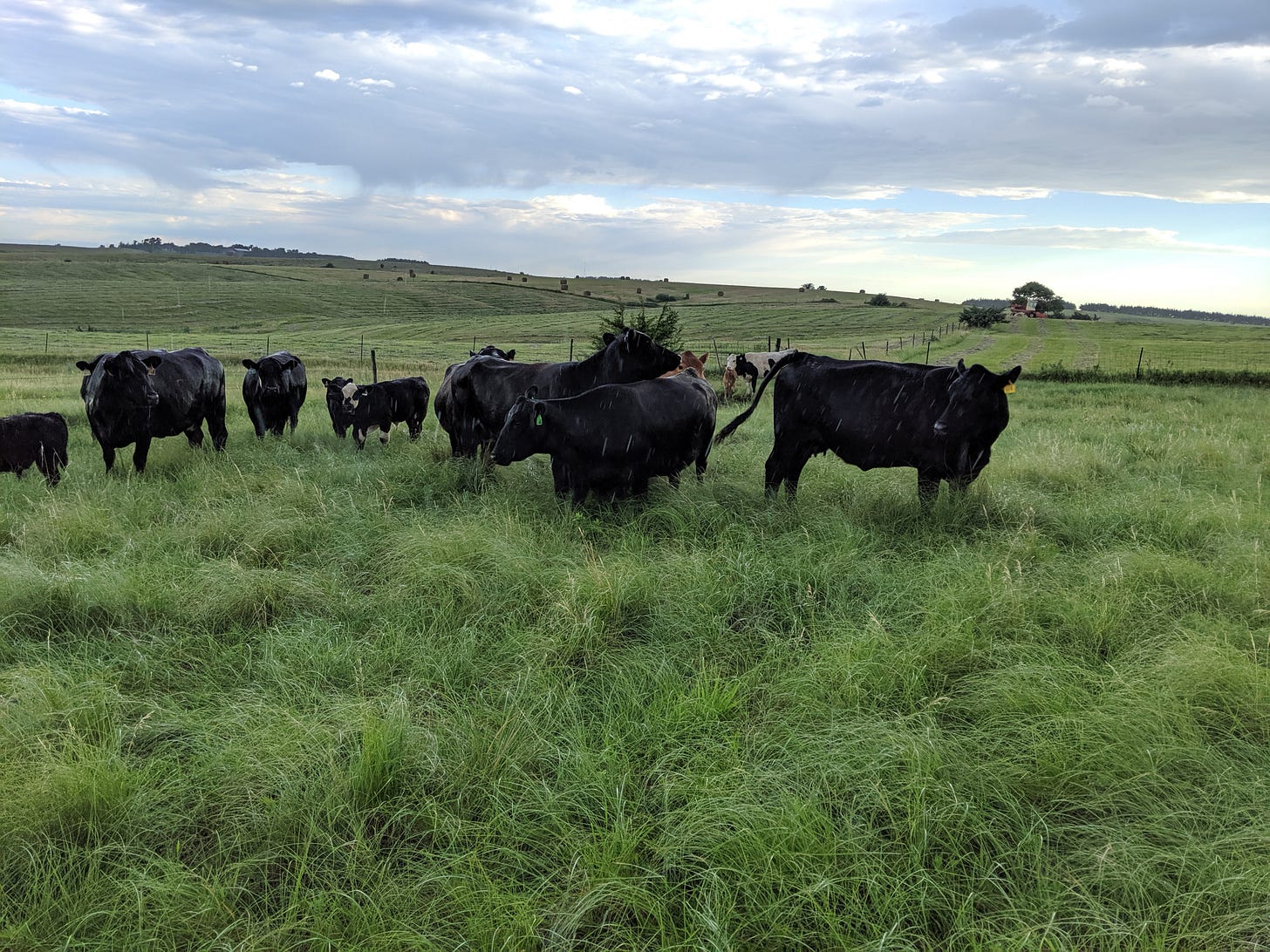Cows should be the cover crop, pause, and as I submitted this to HPJ the USDA issues a new release today.
Written for High Plains Journal
First a side note. I wrote this column last night Oct 22, 2024 and submitted to the High Plains Journal for this weeks edition. Then the morning of Oct 23, 2024 the USDA issues this press release.
USDA Invests $1.5 Billion in 92 Partnership Projects to Advance Conservation and Climate-Smart Agriculture as Part of the Biden-Harris Investing in America Agenda
IT IS MADDNESS AND MUST BE STOPPED. Here is what I wrote.
I have never had a reason to think anything but positive thoughts about the concept of cover crops going into winter. Through the past few years, I have seen a steady growth of plants growing in corn and soybean fields, post-harvest. However, when I witnessed two of my neighbors planting cover crops before they even finished harvesting their corn crop, I knew something was going on.
I assumed that a government program was paying for cover crops because they are not known to be “regenerative farmers” and sure enough, after four days of research I learned that farmers are getting paid $65/acre to plant a cover crop.
First, let me share information the Breakthrough Institute has generated about taxpayer funds going to cover crops written by Dan Blaustein-Rejto:
USDA has awarded over $150 million in federal funds earmarked for climate mitigation to farmers to plant cover crops since 2023 and is on track to award nearly $2.5 billion in climate-related funding in the next three years for cover crop adoption if current trends continue. USDA research programs also award more funding to climate mitigation projects involving cover crops than to any other climate mitigation strategy.
Since 2014, NRCS obligated about $914 million (8.6%) in standard EQIP funding for cover crops, according to USDA data.
The Conservation Stewardship Program (CSP) is another major initiative administered by NRCS that supports farmers in adopting cover crops. CSP offers financial and technical assistance to help farmers manage and enhance their existing conservation efforts. According to USDA, about $20.2 million in CSP funds (3.1%) were obligated in 2023 for farmers to implement various forms of cover cropping.
In addition, the Inflation Reduction Act (IRA) of 2022 expanded funding for EQIP and CSP, providing $8.45 billion and $3.25 billion, respectively, from Fiscal Year 2023 to 2026 to support farmers in adopting farm practices that USDA determines “improve soil carbon, reduce nitrogen losses, or reduce, capture, avoid, or sequester carbon dioxide, methane, or nitrous oxide emissions.”
Among the more than 50 such practices USDA included in its latest list, cover crops stand apart. Thus far, NRCS has obligated more than four times as much EQIP IRA funding to cover crops than to any other practice, $156 million, about 28% of all EQIP IRA spending to date. An additional $8 million in IRA funding for CSP has been directed to cover crops, about 4% of CSP’s IRA spending to-date.
This is in addition to the substantial funding that USDA awarded to projects involving cover crops through its Partnerships for Climate-Smart Commodities. The $3.1 billion initiative, which aims to expand markets for low-carbon commodities, funded projects across the country involving a wide range of commodities. At least one project, led by the National Fish and Wildlife Foundation, is focused exclusively on increasing cover crop adoption. With up to $95 million in federal funding, the organizations involved aim to support implementation on more than 1 million acres.
Though most other funded projects focus on a wide variety of practices, over ¾ of the $2.4 billion that has been approved to date is for projects that involve cover cropping. Few studies have measured carbon levels deeper than 30 cm, let alone to 2 meters. More research is needed to confirm whether and when this deep soil carbon loss occurs, why it happens, and how to minimize it.
After taking a look at the total expense for the subsidies paid to farmers for cover crops, my assessment is that cover crops used in this manner are mostly just another “feel good” idea. It takes a tremendous amount of water in the fall of the year to get a good stand going. The government programs only focus on the removal of CO2 from the atmosphere and pays ZERO attention to real issue that cover crops should be focused on which is soil health.
Cover crops only make sense when the growth can be grazed by a ruminant. If livestock is not involved, I have found zero economic or environmental benefits to putting a cover crop in place. I spoke with Aaron Sawyers, director of No Till on the Plains, and he indicated that he and his members have found benefits with cover crops when livestock are there to utilize the forages. They have been implementing this practice long before our federal government got involved.
Cover crops planted without a plan for grazing will involve chemicals to kill the crop followed by another pass or two with a disc to bury the dead plant residue. Instead, ruminants could aerate the soil and add nutrients while they graze, thus regenerating the soil microbiome.
My message is the same: when government gets involved in business, it stifles progress. It is very clear to me that the ruling elite are more interested in creating dependence on them, utilizing our tax money and funds borrowed from China, than anything to do with soil health. At the end of the day, soil health is the absolute key and it appears the best path to that is for cows to be the real cover crop.





Let farmers FARM!
Very true!!